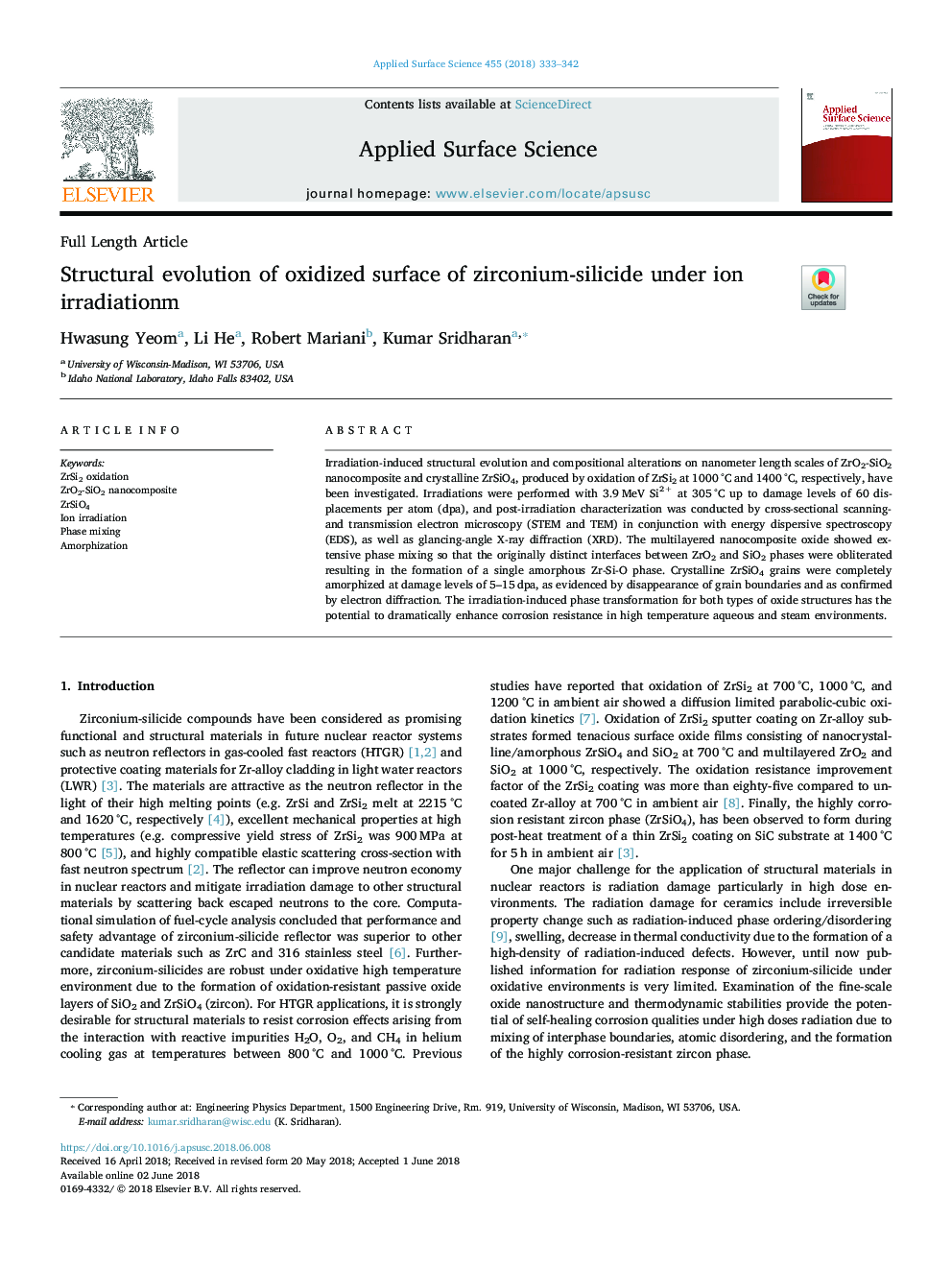| Article ID | Journal | Published Year | Pages | File Type |
|---|---|---|---|---|
| 7833153 | Applied Surface Science | 2018 | 10 Pages |
Abstract
Irradiation-induced structural evolution and compositional alterations on nanometer length scales of ZrO2-SiO2 nanocomposite and crystalline ZrSiO4, produced by oxidation of ZrSi2 at 1000â¯Â°C and 1400â¯Â°C, respectively, have been investigated. Irradiations were performed with 3.9â¯MeV Si2+ at 305â¯Â°C up to damage levels of 60 displacements per atom (dpa), and post-irradiation characterization was conducted by cross-sectional scanning- and transmission electron microscopy (STEM and TEM) in conjunction with energy dispersive spectroscopy (EDS), as well as glancing-angle X-ray diffraction (XRD). The multilayered nanocomposite oxide showed extensive phase mixing so that the originally distinct interfaces between ZrO2 and SiO2 phases were obliterated resulting in the formation of a single amorphous Zr-Si-O phase. Crystalline ZrSiO4 grains were completely amorphized at damage levels of 5-15â¯dpa, as evidenced by disappearance of grain boundaries and as confirmed by electron diffraction. The irradiation-induced phase transformation for both types of oxide structures has the potential to dramatically enhance corrosion resistance in high temperature aqueous and steam environments.
Related Topics
Physical Sciences and Engineering
Chemistry
Physical and Theoretical Chemistry
Authors
Hwasung Yeom, Li He, Robert Mariani, Kumar Sridharan,
